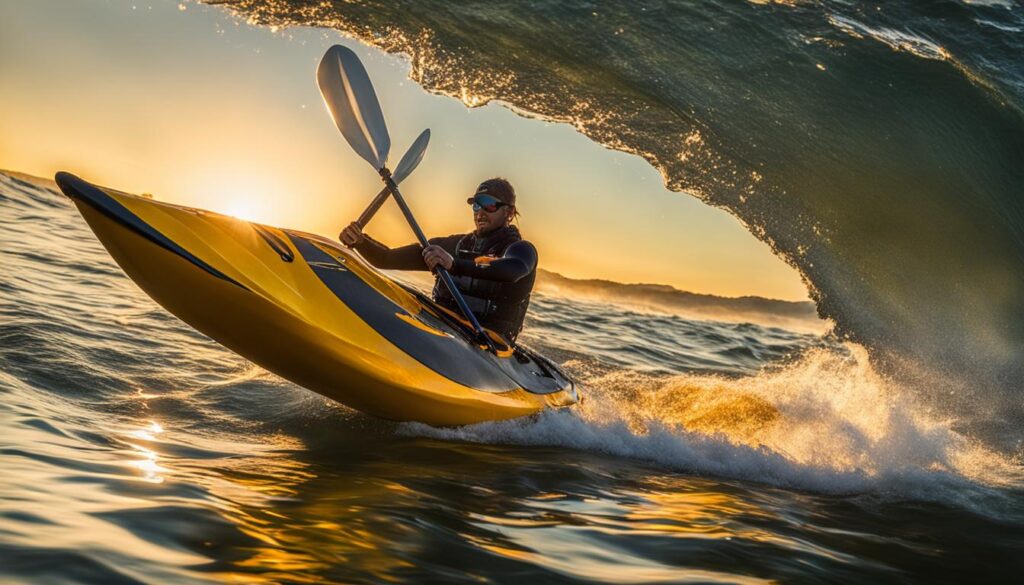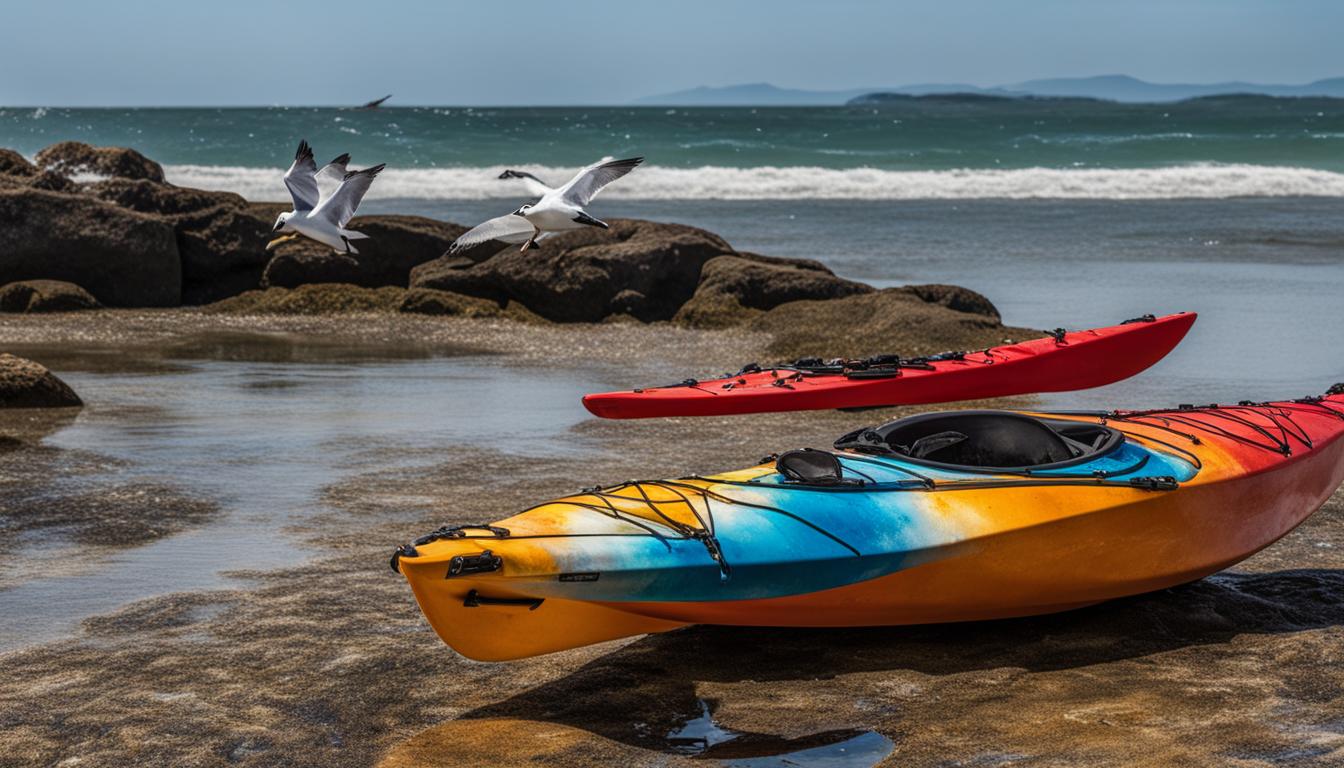Canoes and kayaks have long been popular choices for water transportation and recreation. If you enjoy kayaking in saltwater environments, it’s important to take proper care of your kayak to ensure its safety and longevity. Different kayak materials require different levels of maintenance, and regular upkeep is essential to protect your kayak from saltwater corrosion and other damages.
After each saltwater outing, make sure to rinse your kayak thoroughly with freshwater. This simple step helps remove salt residue and prevents corrosion. Regular inspections are also recommended to check for any damage or wear and tear. Applying water-resistant treatments, using marine-grade hardware, and storing your kayak properly during the off-season can further protect it from unnecessary damage.
To help you make informed decisions for your kayak care in saltwater environments, this comprehensive guide will provide you with essential information on choosing saltwater-resistant materials, maintenance tips, and the best practices for protecting your kayak from saltwater corrosion.
Key Takeaways:
- Rinse your kayak with freshwater after each saltwater outing to prevent corrosion.
- Regular inspections and maintenance are crucial for identifying and addressing potential damages.
- Choose kayaks made from saltwater-resistant materials like HDPE, fiberglass, or marine-grade aluminum.
- Apply water-resistant treatments to wooden kayaks and use marine-grade hardware for better protection.
- Proper storage during the off-season is important to prevent damage from cold weather, UV rays, and rodents.
Choosing Saltwater-Resistant Kayak Materials
When it comes to selecting a kayak for saltwater environments, it is crucial to choose materials that are inherently resistant to corrosion. Protecting your kayak from saltwater corrosion is key to ensuring its longevity and performance. Various materials have different levels of resistance to saltwater, so making an informed decision is essential. Here are three excellent options to consider:
- High-Density Polyethylene (HDPE): Kayaks made from HDPE are known for their durability and resistance to impacts. This material is highly resistant to saltwater corrosion and requires minimal maintenance. HDPE kayaks can withstand the harsh conditions of saltwater environments without compromising their structural integrity.
- Fiberglass: Fiberglass kayaks offer a balance of strength and lightweight, making them popular choices among paddlers. Fiberglass is inherently resistant to corrosion, making it a suitable option for saltwater environments. These kayaks excel in terms of performance and durability, providing a reliable and enjoyable paddling experience.
- Marine-Grade Aluminum: If you prefer a lightweight kayak with exceptional saltwater resistance, marine-grade aluminum kayaks are an ideal choice. These kayaks are specifically designed to withstand the corrosive effects of saltwater, ensuring their longevity and performance. Marine-grade aluminum is known for its durability, strength, and resistance to corrosion, making it a reliable material for saltwater environments.
By choosing kayaks made from these saltwater-resistant materials, you can protect your investment and enjoy paddling without worrying about corrosion or damage caused by saltwater exposure. These materials have been specifically chosen for their ability to withstand the harsh conditions of saltwater environments, allowing you to explore coastal waters with confidence.
| Kayak Material | Saltwater Resistance | Durability | Weight |
|---|---|---|---|
| High-Density Polyethylene (HDPE) | High | Excellent | Medium |
| Fiberglass | High | Very Good | Light |
| Marine-Grade Aluminum | Very High | Excellent | Light |
As the table above demonstrates, each material offers a different combination of saltwater resistance, durability, and weight. Consider your paddling needs and preferences to determine the best material for your saltwater kayak. Regardless of the material you choose, proper maintenance and care are essential to prolong the lifespan of your kayak and ensure its optimal performance in saltwater environments.
Protecting your kayak from saltwater corrosion begins with choosing the right materials. By selecting a kayak made from saltwater-resistant materials, you can enjoy your paddling adventures in coastal waters without worrying about the detrimental effects of saltwater exposure. So, whether you opt for HDPE, fiberglass, or marine-grade aluminum, rest assured that you’ve made a wise decision in protecting your kayak from saltwater corrosion.

Essential Maintenance Tips for Saltwater Kayak Care
Proper maintenance is crucial for keeping your kayak in top condition in saltwater environments. After each saltwater outing, it is recommended to rinse the kayak thoroughly with freshwater to remove salt residue and prevent corrosion. This simple step will help protect your kayak from salt damage and ensure its longevity.
Regular inspections are also important to catch any damage or wear and tear early on. Check for any cracks, scratches, or loose fittings and take appropriate measures to address them. Repairing superficial scratches on fiberglass or composite kayaks with the help of a skilled technician can help maintain their integrity and prevent further damage.
In addition to cleaning and protecting your kayak itself, don’t forget about your personal paddlesport gear. Clean and apply a spray without silicone to your life jackets, neoprene wetsuits, and gloves to keep them clean and protected from UV damage.
Lastly, proper storage of your kayak during the off-season is vital. Find a dry and well-ventilated area to store your kayak, away from cold weather, UV rays, wind, rain, and rodents. This will prevent significant damage and extend the lifespan of your kayak.
FAQ
How often should I rinse my kayak after a saltwater outing?
It is recommended to rinse your kayak with freshwater after each saltwater outing to remove salt residue and prevent corrosion.
What materials are best for saltwater kayaks?
High-density polyethylene (HDPE), fiberglass, and marine-grade aluminum are excellent choices for saltwater kayaks as they are inherently resistant to corrosion.
How can I protect a wooden kayak from saltwater damage?
Applying water-resistant treatments to wooden kayaks can help protect them from rot, mold, and mildew caused by saltwater exposure.
Can scratches on fiberglass kayaks be repaired?
Superficial scratches on fiberglass kayaks can be repaired by a skilled technician to maintain the integrity of the kayak.
How should I clean and protect my personal paddlesport gear?
Applying a spray without silicone can help clean and protect gear such as life jackets, neoprene wetsuits, and gloves from UV damage.
What components should I lubricate and tighten on my kayak?
It is important to lubricate and tighten screws, bungee cords, and metal parts on your kayak to prevent binding and ensure smooth operation.
How can I prevent damage from UV radiation on my kayak?
Applying a high-quality automotive wax or protectant on the kayak hull can help prevent damage from UV radiation.
How should I store my kayak during the off-season?
It is best to store your kayak in a dry and well-ventilated area, away from cold weather, UV rays, wind, rain, and rodents, to prevent significant damage and prolong its lifespan.





